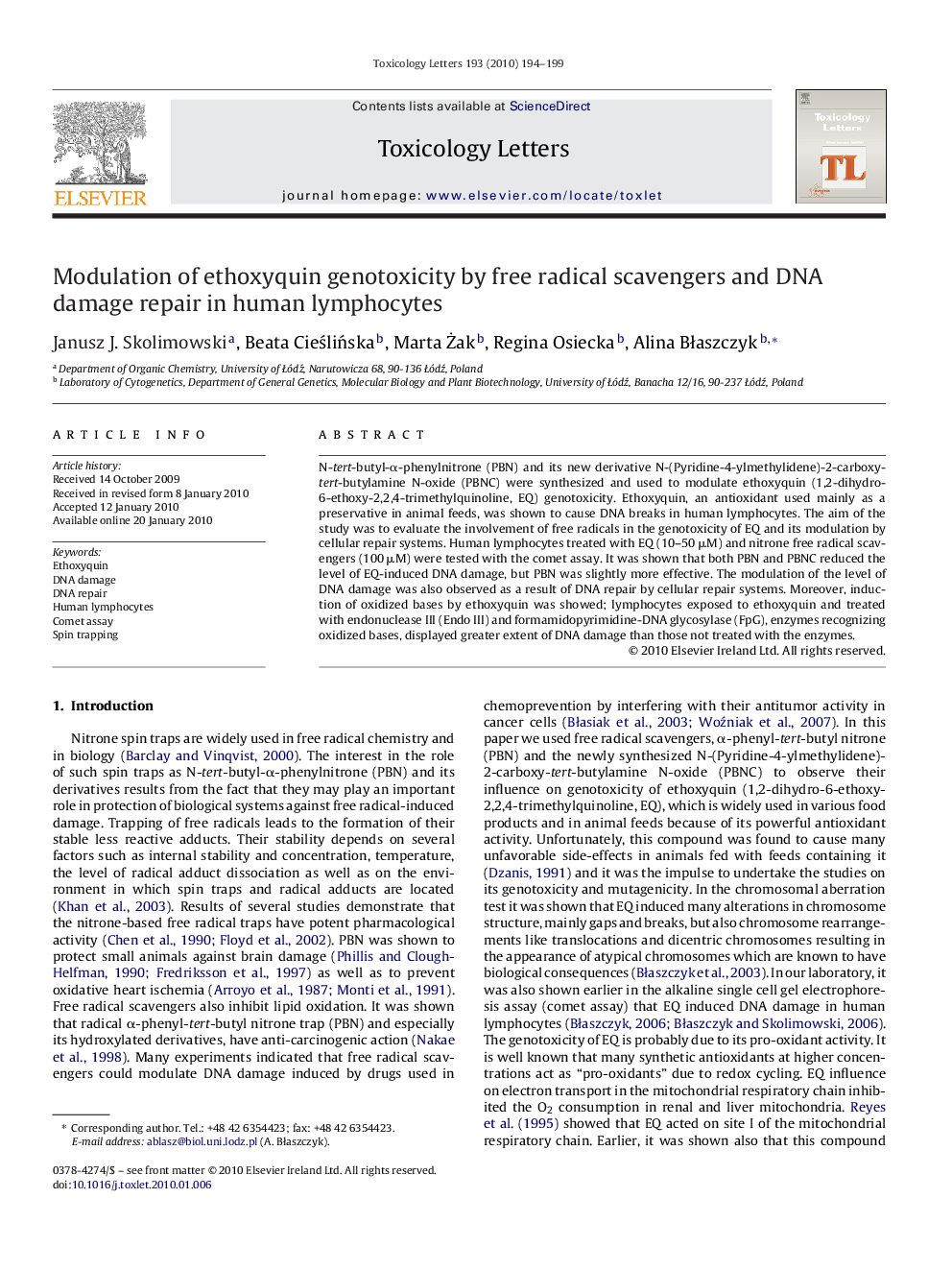| Article ID | Journal | Published Year | Pages | File Type |
|---|---|---|---|---|
| 2600505 | Toxicology Letters | 2010 | 6 Pages |
N-tert-butyl-α-phenylnitrone (PBN) and its new derivative N-(Pyridine-4-ylmethylidene)-2-carboxy-tert-butylamine N-oxide (PBNC) were synthesized and used to modulate ethoxyquin (1,2-dihydro-6-ethoxy-2,2,4-trimethylquinoline, EQ) genotoxicity. Ethoxyquin, an antioxidant used mainly as a preservative in animal feeds, was shown to cause DNA breaks in human lymphocytes. The aim of the study was to evaluate the involvement of free radicals in the genotoxicity of EQ and its modulation by cellular repair systems. Human lymphocytes treated with EQ (10–50 μM) and nitrone free radical scavengers (100 μM) were tested with the comet assay. It was shown that both PBN and PBNC reduced the level of EQ-induced DNA damage, but PBN was slightly more effective. The modulation of the level of DNA damage was also observed as a result of DNA repair by cellular repair systems. Moreover, induction of oxidized bases by ethoxyquin was showed; lymphocytes exposed to ethoxyquin and treated with endonuclease III (Endo III) and formamidopyrimidine-DNA glycosylase (FpG), enzymes recognizing oxidized bases, displayed greater extent of DNA damage than those not treated with the enzymes.
